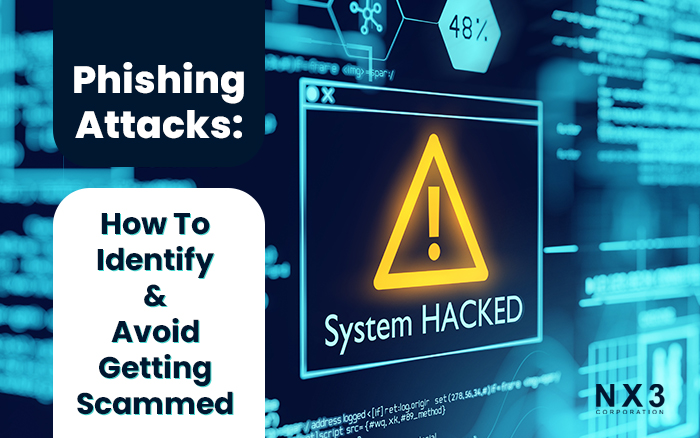Table of Contents
What is phishing exactly?
Phishing is a greatly cultivated form of cybercrime that uses social engineering to steal credit card numbers and login credentials. These malicious actors disguise themselves as a trusted entity, an actual individual, or even an enterprise you might have business relations with, in order to lure you into disclosing your personal information.
This occurs when you unknowingly open an email, instant message, or text message, thinking that it came from a trusted source. The phishing attack becomes successful once you click on the malicious link, inevitably leading you to paralyze your system for a ransomware attack, through installing malware and publishing sensitive data on the internet, or worst-case scenario, on the dark web.
The emails are designed to trick the victim into thinking that they need to open a link, like an invoice from a bank, or a higher up in the company asking you to click and download the attachment. With one touch or click, you can endanger your identity and your company’s security, which eventually leads to compromising sensitive and personal information, i.e, username and passwords, credit card numbers, and financial data.
How to identify phishing attacks?
As the name suggests, phishing attacks come from the idea that imposters are “fishing” for victims using different mediums, like email, as bait. Phishing can be traced back to the 1990s; the oldest of the cyber attack types, and to this day, the most rampant with ever-developing and sophisticated malevolent methods of digital crimes.
To begin with, all types of phishing attacks are done with the same malicious intent: theft. But for the sake of security and protection, it is beneficial for every individual to learn and identify the three most common types of phishing attacks.
Spear phishing
It should be relatively easy to understand the meaning of “spear phishing,” remaining parallel to the fishing metaphor. In this scenario, instead of going after random victims, the attacker targets specific individuals and companies. Altering their emails with the victim’s personal information like name, work, position, etc, the attacker can bait the target into believing that the email is from a trusted sender and acquire whatever data they want from the individual.
Whaling
Whaling or CEO fraud is when attackers target the ones at the top, like the CEO or any other high-ranking authoritative figure in an organization. The logic stands that attacking an executive of higher value will provide more valuable information than a regular person. The executive’s email, if compromised, will be used to authorize money transfers and other sensitive information, leaking it on the dark web. They can even emotionally manipulate employees into making wire transfers and personal data.
Pharming
Last but not least, pharming is the trump card of all phishing and phishers. The deadliest cyberattack of its kind in phishing; here the attackers completely turn their back on the concept of traditional baiting and adopt pharming. The idea revolves around misguiding website traffic to a fraudulent website by taking advantage of cache vulnerabilities against DNS (domain name system). The pharmer attacks the DNS server and alters the IP address equated with the website name, so every time a user visits the website, it will take them to the attacker’s malicious website.
Avoid getting scammed by phishing attacks
Awareness campaigns on how to identify and prevent getting scammed and lessons on how to utilize modern tools to spot different kinds of cyber-attacks should be made available and mandatory for every organization. All employees, including high-ranking executives and CEOs, should make their attendance compulsory.
Train your staff for security awareness, while keeping the following in mind; even then it is not guaranteed that you or your employees will be safe from the dangers of phishing, but knowing and understanding the following will definitely increase the chances of protection and safety.
- Monitor what information is being shared, while carefully analyzing emails.
- Two-factor authentication (2FA) is the most effective way to counter any type of phishing attack.
- Always check for any spelling mistakes or errors in email URLs before clicking or entering any information. Look for generic mistakes or grammatical errors.
- If you suspect a “trusted source,” contact them separately for verification.
- Avoid giving any sort of personal information, even if it is a minute detail, over a phone call.
- Regularly update your antivirus software.
- Only use HTTPS-protected websites.
Conclusion
The unstoppable rise of phishing scams is of great threat to individuals, enterprises, and even national security. While organizations continue to warn people about phishing scams, it isn’t always humanly possible to identify them. It is of extreme importance that every individual in a company be able to recognize some of the most common types of phishing attacks to protect their information and of those around them.
For more information and help on how to identify phishing scams and prevent them from happening, contact us here.

